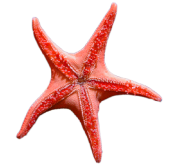
Tuula Hollmen, D.V.M, Ph.D.
Senior Research Scientist
Research Associate Professor, College of Fisheries and Ocean Sciences, University of Alaska Fairbanks
RESEARCH INTEREST:
Marine ecology, conservation biology, citizen science, decision analysis, One HealthI received my DVM in 1992 and PhD in physiological ecology in 2002, and the same year moved to Alaska to join the UAF and ASLC. I served as the interim director of science for the ASLC during 2010-2015. My research aims to understand adaptations and responses of marine species to environmental change, from interdisciplinary and integrative perspectives, and by applying a variety of experimental and observational research methods. I mostly, but not exclusively, work with marine birds. I am interested in applied ecology and seeking to address conservation and management objectives for marine species. I’ve served on the spectacled and Steller’s eider recovery teams since 2002. Broadly, I am interested in the interface of environmental, animal, and human health, and shared One Health approaches and ways of knowing to solve challenges. I am also enthusiastic about citizen sciences and participatory research as an approach to data collection and science education.
(* = student or postdoc author)
Veazey, L.*, Latty, C., Chapman, Z., Hollmen, T.E. 2025. Applying Computer Vision to Accelerate Monitoring and Analysis of Bird Incubation Behaviors: A Case Study Using Common Eider Nest Camera Footage. Remote Sensing in Ecology and Conservation, DOI 10.1002/rse2.70022.
Smith, M. M., Dusek, R.J., Hollmen, T.E., Schoen, S., Van Hemert, C., Steinmetzer, K., Lee, A., Schlener, J., Patil, V., Hardison, R., Kulis, D., Anderson, D.M., Hall, S. 2025. Paralytic shellfish toxins and seabirds: evaluating the behavioral responses, sublethal effects, and ecological implications of saxitoxin ingestion by Common Murres. Harmful Algae 148: 102919.
Maliguine, A.M.*, Hollmen, T.E., Amundson, C.L., Konar, B.H. 2025. Changes in benthic prey availability and quality suggest less favorable foraging conditions for Threatened Steller’s eiders (Polysticta stelleri) molting at Izembek Lagoon. Polar Biology 48:86.
Ulman, S.E.G., Hollmen, T.E., Flint, P.L. 2025. Timing of Steller’s Eider remigial molt has delayed over 26-year span. Journal of Ornithology, DOI.org/10.1007/s10336-025-
Whiting, A., Naylor, C., Hollmen, T.E., Burek-Huntington, K., Huntington, H. 2025. Connecting Inupiaq and Veterinary Knowledge about Wildlife Diseases and Food Safety. Arctic, in press.
Hollmen, T.E., Flint, P.L., Ulman, S.E.G., Wilson, H.M., Amundson, C.A., Osnas, E. 2023. Climate change and coastal wetland salinization: Physiological and ecological consequences for Arctic waterfowl. Functional Ecology 37(7):1884-1896, DOI 10.1111/1365-2435.14363
Tanedo, S.A.,* and T.E. Hollmén. 2020. Refining remote observation techniques to estimate productivity of Black-legged Kittiwakes (Rissa tridactyla) in Resurrection Bay, Gulf of Alaska. Marine Ornithology 48: 61–69.
Maniscalco, J.M., A.M. Springer, K.C. Counihan, T. Hollmén, H.M. Aderman, and M. Toyukak Sr. 2020. Contemporary diets of walruses in Bristol Bay, Alaska suggest temporal variability in benthic community structure. PeerJ 8:e8735. http://doi.org/10.7717/peerj.8735
Christie, K.S.,* T.E. Hollmén, P.L. Flint, and D. Douglas. 2018. Non-linear effect of sea ice: Spectacled Eider survival declines at both extremes of the ice spectrum. Ecology and Evolution 8:11808–11818. https://doi.org/10.1002/ece3.4637
Christie, K.S.,* T.E. Hollmén, H.P. Huntington, and J.R. Lovvorn. 2018. Structured decision analysis informed by traditional ecological knowledge as a tool to strengthen subsistence systems in a changing Arctic. Ecology and Society 23(4): 42. https://doi.org/10.5751/ES-10596-230442
Churchwell, R.T.,* S. Kendall, S.C. Brown, A.L. Blanchard, T.E. Hollmen, and A.N. Powell. 2017. The first hop: Use of Beaufort Sea deltas by hatch-year semipalmated sandpipers. Estuaries and Coasts 41:280–292. https://doi.org/10.1007/s12237-017-0272-8
Counihan, K.L.,* L.F. Skerratt,* J.C. Franson, and T.E. Hollmén. 2015. Phylogenetic and pathogenic characterization of novel adenoviruses isolated from long-tailed ducks (Clangula hyemalis). Virology 485:393–401. https://doi.org/10.1016/j.virol.2015.07.026
Frost, C.J.,* T.E. Hollmén, and J.H. Reynolds. 2013. Trends in annual survival of Steller’s eiders molting at Izembek Lagoon on the Alaska Peninsula, 1993–2006. Arctic 66(2): 173–178. https://doi.org/10.14430/
Maniscalco, J.M., A.M. Springer, K.C. Counihan, T. Hollmén, H.M. Aderman, and M. Toyukak Sr. 2020. Contemporary diets of walruses in Bristol Bay, Alaska suggest temporal variability in benthic community structure. PeerJ 8:e8735. http://doi.org/10.7717/peerj.
Christie, K.S.,* T.E. Hollmén, P.L. Flint, and D. Douglas. 2018. Non-linear effect of sea ice: Spectacled Eider survival declines at both extremes of the ice spectrum. Ecology and Evolution 8:11808–11818. https://doi.org/10.1002/ece3.
Christie, K.S.,* T.E. Hollmén, H.P. Huntington, and J.R. Lovvorn. 2018. Structured decision analysis informed by traditional ecological knowledge as a tool to strengthen subsistence systems in a changing Arctic. Ecology and Society 23(4): 42. https://doi.org/10.5751/ES-
Churchwell, R.T.,* S. Kendall, S.C. Brown, A.L. Blanchard, T.E. Hollmen, and A.N. Powell. 2017. The first hop: Use of Beaufort Sea deltas by hatch-year semipalmated sandpipers. Estuaries and Coasts 41:280–292. https://doi.org/10.1007/
Counihan, K.L.,* L.F. Skerratt,* J.C. Franson, and T.E. Hollmén. 2015. Phylogenetic and pathogenic characterization of novel adenoviruses isolated from long-tailed ducks (Clangula hyemalis). Virology 485:393–401. https://doi.org/10.1016/j.
Frost, C.J.,* T.E. Hollmén, and J.H. Reynolds. 2013. Trends in annual survival of Steller’s eiders molting at Izembek Lagoon on the Alaska Peninsula, 1993–2006. Arctic 66(2): 173–178. https://doi.org/10.14430/






